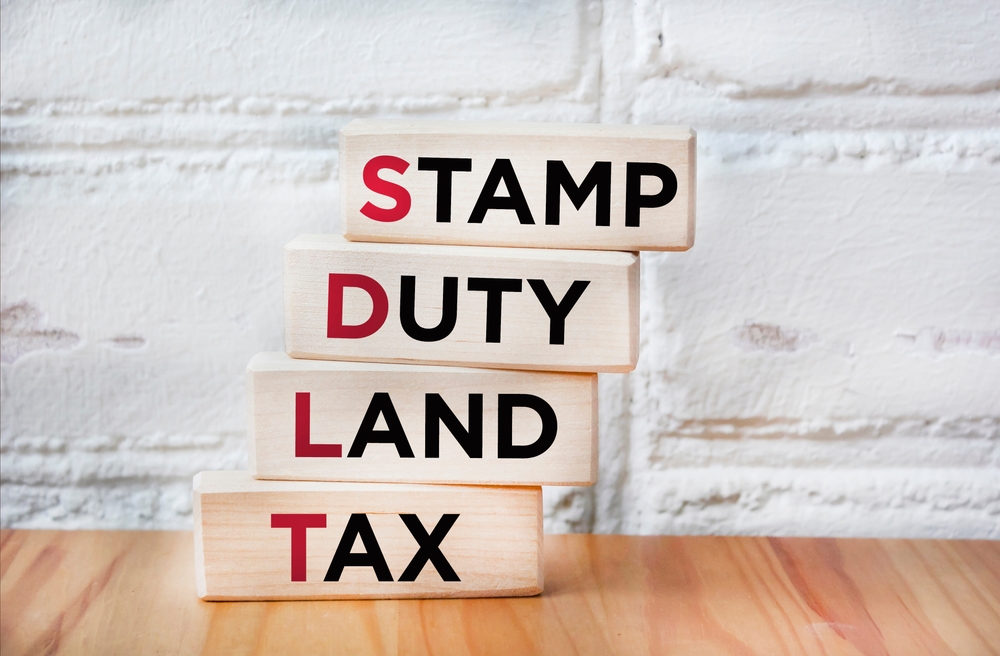The stamp duty threshold changed on 1 April 2025. Here’s what you need to know…
You might have seen recently that the stamp duty threshold changed on 1 April 2025. Here’s everything you need to know about stamp duty, from what it is to how much you’ll need to pay when you buy your new property.
What is stamp duty?
Stamp duty (or stamp duty land tax – SDLT for short) is a mandatory tax you must pay when you purchase either property or land in England and Northern Ireland (in Scotland, you must pay Land and Buildings Transaction Tax – LBTT – while in Wales, buyers are subject to Land Transaction Tax – LTT).
The latest change
From 1 April 2025, the nil rate stamp duty threshold for residential properties changed. ‘Nil rate’ equates to the first portion of your property’s price and is charged at 0% stamp duty, meaning that up to that amount, you won’t pay any stamp duty.
• The nil rate stamp duty threshold for homeowners looking to move home has been lowered from £250,000 to £125,000.
• The nil rate stamp duty threshold for first-time buyers has dropped from £425,000 to £300,000.
What does this mean for homeowners?
If you’re currently a homeowner and looking to move to a new property, this means that you won’t pay any stamp duty on the first £125,000 of your new property’s value. Above that amount, the stamp duty you pay will increase in the following increments…
• From £125,001 to £250,000, you’ll pay 2% stamp duty
• From £250,001 to £925,000, you’ll pay 5% stamp duty
• From £925,001 to £1.5 million, you’ll pay 10% stamp duty
• For any amount above £1.5 million, you’ll pay 12% stamp duty
As an example, if you’re an existing homeowner and you’re looking to buy a property for £500,000, you would pay:
• Zero stamp duty on the first £125,000 = £0
• 2% stamp duty on the portion from £125,001 to £250,000 (i.e. £124,999) = £2,500
• 5% on the portion from £250,001 to £500,000* (i.e. £249,999) = £12,500
Total stamp duty owed on a home purchase costing £500,000 = £15,000
What does this mean for first-time buyers?
If you’re a first-time buyer, you won’t have to pay any stamp duty on a property that costs £300,000 or less. If the property you’re buying costs between £300,001 and £500,000, you’ll have to pay 5% stamp duty on the portion from £300,001 to £500,000.
If, however, the property you’re purchasing costs more than £500,000, you won’t be entitled to first-time buyer stamp duty relief and will instead have to pay the same amount of stamp duty as existing homeowners.
A first-time buyer is someone who is buying their main residence and has never owned a property before, either in this country or abroad. If you’re purchasing a property with someone else, that person must also never have owned a property anywhere in the world before, for you to obtain the first-time buyer stamp duty relief.
Stamp duty on second homes
If you’re purchasing an additional property to the one you usually live in, for example, a holiday home, you will be subject to the same stamp duty rates as an existing homeowner, plus 5% on the overall cost of the property.
How is stamp duty paid?
Stamp duty is payable 14 days from the date of your property purchase, and you must file a stamp duty land tax return to HMRC. Your solicitor will normally calculate the stamp duty you owe and pay it on your behalf on completion day, after collecting the funds from you. If you don’t pay within this timeframe, you may be charged interest and penalties by HMRC.
If you’d like to find out more about the charges, or if you’re thinking of buying a property and want to know more about stamp duty and what you might be liable to pay, we’re here to help.

